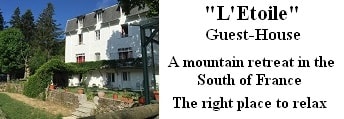
|
Lillooet Wild West of Pioneers |

 Lillooet, often referred to as the “Little Nugget of British Columbia,” serves as a regional center with a population of approximately 5,000 residents. The earliest inhabitants were self-reliant fishermen and hunter-gatherers who lived in sync with the changing seasons.
Lillooet, often referred to as the “Little Nugget of British Columbia,” serves as a regional center with a population of approximately 5,000 residents. The earliest inhabitants were self-reliant fishermen and hunter-gatherers who lived in sync with the changing seasons.
 The explorer Simon Fraser reached this place on June 30, 1808, after a strenuous journey along the river that now bears his name. Apart from a few visits by trappers, Lillooet remained relatively quiet until the gold prospectors arrived in 1858.
The explorer Simon Fraser reached this place on June 30, 1808, after a strenuous journey along the river that now bears his name. Apart from a few visits by trappers, Lillooet remained relatively quiet until the gold prospectors arrived in 1858.
Originally, Lillooet was known as Cayoosh Flat, named for the lush pastures that the cayuses (Indian ponies) enjoyed. In 1861, Governor James Douglas renamed the town Lillooet, although its geography and spelling were somewhat ambiguous. The name Lillooet is a misspelling of the indigenous word LEEL-wat, referring to the native people of Mount Currie and its surrounding areas.
In the 1860s, Lillooet was the second-largest settlement north of San Francisco and west of Chicago. Located at Mile 0 of the Cariboo Road, it was a bustling place with 13 saloons, 25 drinking establishments, and a population of 16,000.
 Despite the departure of prospectors for more promising horizons like the Klondike, Lillooet endured. In the 1890s, gold prospectors at the Golden Cache mine discovered several million dollars’ worth of gold. The arrival of the railroad in 1912 and the discovery of gold in the Bridge River sparked another boom, allowing Lillooet to prosper.
Despite the departure of prospectors for more promising horizons like the Klondike, Lillooet endured. In the 1890s, gold prospectors at the Golden Cache mine discovered several million dollars’ worth of gold. The arrival of the railroad in 1912 and the discovery of gold in the Bridge River sparked another boom, allowing Lillooet to prosper.
The types of trees and plants in the area vary with altitude and sunlight. Lower elevations are home to Ponderosa pine and Douglas fir. As the altitude increases, these gradually give way to Lodgepole pine, Engemann spruce, and Sub-Alpine fir. The primary trees planted in this region are pine, spruce, balsam, and Douglas fir. In some of the wetter areas closer to the coast, cedar and hemlock are also cultivated.
 The St’at’imc people’s traditional territory spans approximately 100 square miles, stretching from Pavillon in the north to Port Douglas in the south. They have resided here for 9,000 years, with the Upper St’at’imc primarily inhabiting the northern region, including Anderson Lake.
The St’at’imc people’s traditional territory spans approximately 100 square miles, stretching from Pavillon in the north to Port Douglas in the south. They have resided here for 9,000 years, with the Upper St’at’imc primarily inhabiting the northern region, including Anderson Lake.
The tribe was composed of several family communities that shared the same language, culture, resources, and trade. Their economy was based on hunting, fishing, plant gathering, and services. They led a semi-nomadic lifestyle, traveling in the spring, summer, and fall to areas where food was abundant.
Before the arrival of the Europeans, the St’at’imc had many chiefs. These leaders possessed the knowledge, skills, and qualities necessary for the tribe’s survival. Decisions were made by consensus for the collective good. They were known for their generosity, kindness, productivity, spirituality, and peaceful nature. However, they defended their territory and honor with bravery when necessary. Despite occasional attacks by neighboring tribes, the St’at’imc language and culture have endured adversity. Present and future generations continue to uphold them.
The Hanged Man’s Tree, an old Ponderosa Pine, was used as a gallows by the justice system over 100 years ago. The law at that time was administered by Sir Matthew Begbie, better known as “the Hanging Judge”. Two thieves were hanged simultaneously and buried on-site. In 1859, Judge Begbie wrote: “Lillooet is a prosperous and attractively situated place on the Fraser River.



